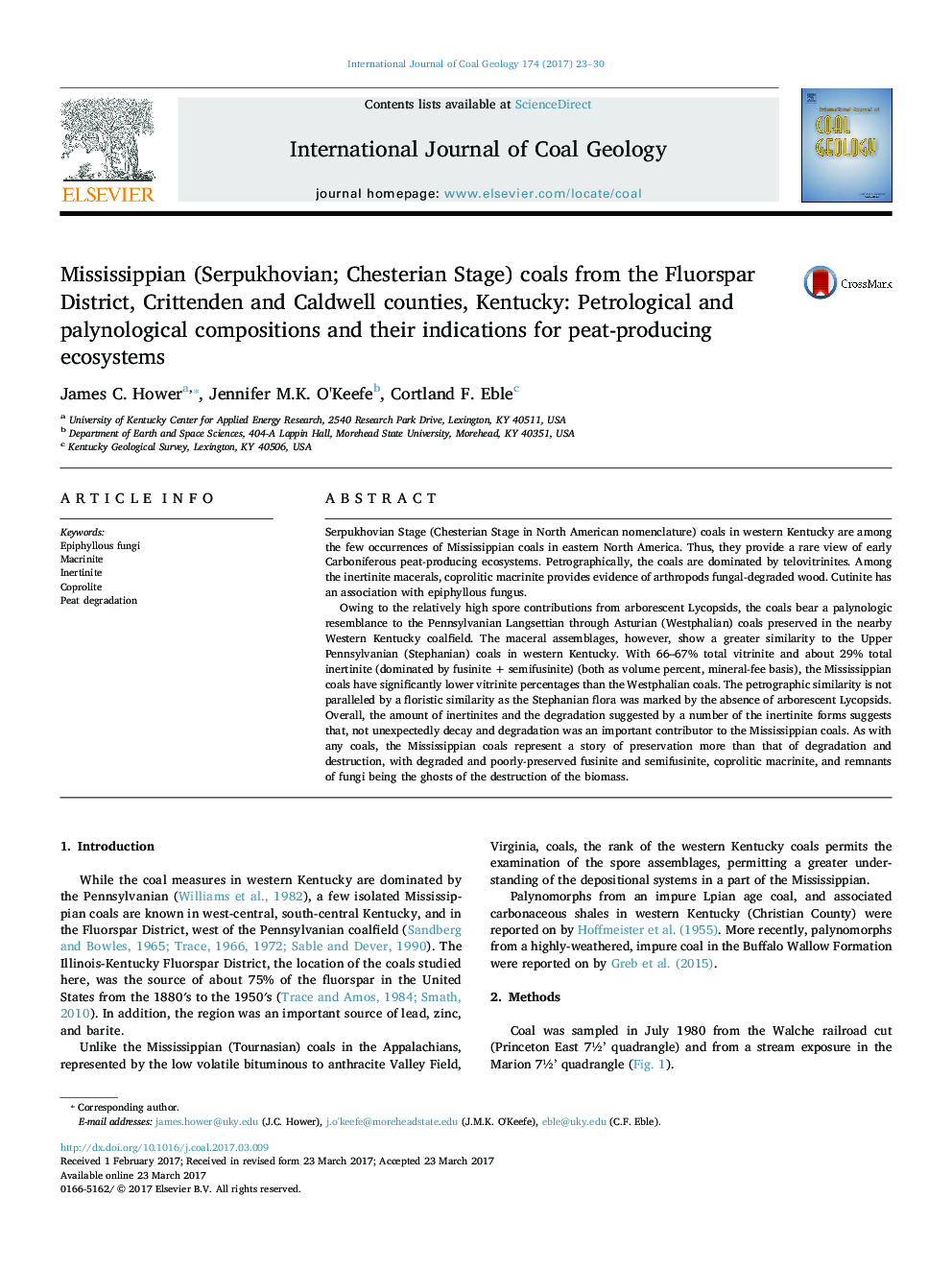| Article ID | Journal | Published Year | Pages | File Type |
|---|---|---|---|---|
| 5483607 | International Journal of Coal Geology | 2017 | 8 Pages |
Abstract
Owing to the relatively high spore contributions from arborescent Lycopsids, the coals bear a palynologic resemblance to the Pennsylvanian Langsettian through Asturian (Westphalian) coals preserved in the nearby Western Kentucky coalfield. The maceral assemblages, however, show a greater similarity to the Upper Pennsylvanian (Stephanian) coals in western Kentucky. With 66-67% total vitrinite and about 29% total inertinite (dominated by fusinite + semifusinite) (both as volume percent, mineral-fee basis), the Mississippian coals have significantly lower vitrinite percentages than the Westphalian coals. The petrographic similarity is not paralleled by a floristic similarity as the Stephanian flora was marked by the absence of arborescent Lycopsids. Overall, the amount of inertinites and the degradation suggested by a number of the inertinite forms suggests that, not unexpectedly decay and degradation was an important contributor to the Mississippian coals. As with any coals, the Mississippian coals represent a story of preservation more than that of degradation and destruction, with degraded and poorly-preserved fusinite and semifusinite, coprolitic macrinite, and remnants of fungi being the ghosts of the destruction of the biomass.
Related Topics
Physical Sciences and Engineering
Earth and Planetary Sciences
Economic Geology
Authors
James C. Hower, Jennifer M.K. O'Keefe, Cortland F. Eble,
